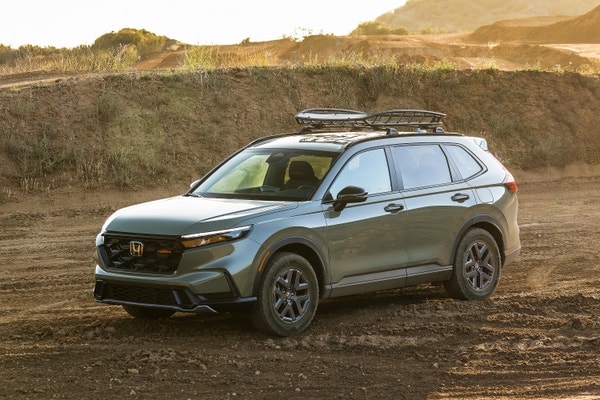We've described the non-hybrid CR-V as "composed and confident." The hybrid version is all that plus more power and better fuel economy. Its hybrid powertrain delivers a combined output of 212 hp and 232 lb-ft of torque.
This is a significant bump from the CR-V's 190 hp and 179 lb-ft of torque. The Hybrid can give you a quick burst of power when you leave a stop, and it has no problem making quick passes when you need it.
The CR-V Hybrid uses electric power only to get you going from a stop and then transitions to combined gas/hybrid power once you're rolling. It's a smooth handoff. The only indication of the switch is the sound of the engine firing up, which replaces the Hybrid's buzz-hum pedestrian warning tone. There's no shudder or jolt as the engine kicks in.
There's also no conventional transmission, so acceleration and deceleration are single, smooth motions. To round out the trio of actions you won't notice, the all-wheel-drive system stays in front-wheel-drive mode for better fuel economy unless it senses a loss of traction, at which point it sends power to the rear wheels as well.
The CR-V stops as easily as it accelerates. The brake pedal has a soft and predictable feel to it, which is welcome. Other hybrids sometimes have a rather grabby brake feel because of the transition from the hybrid system's regenerative braking to the regular friction disc brakes.
What look like transmission paddle shifters on the steering wheel are instead controls that allow you to adjust the amount of regenerative braking. This is an unusual feature for a hybrid, and you can use it to maximize fuel economy by, for instance, using regenerative braking to keep your speed in check on downgrades or coasting while in stop-and-go traffic.
Steering in SUVs is often slow to respond, like a dentist shot the wheel full of Novocain, but the CR-V feels connected and smooth. It's responsive around corners and firm on straightaways. Similarly, the CR-V manages a comfortable ride over rough pavement, but it stays upright around turns.








